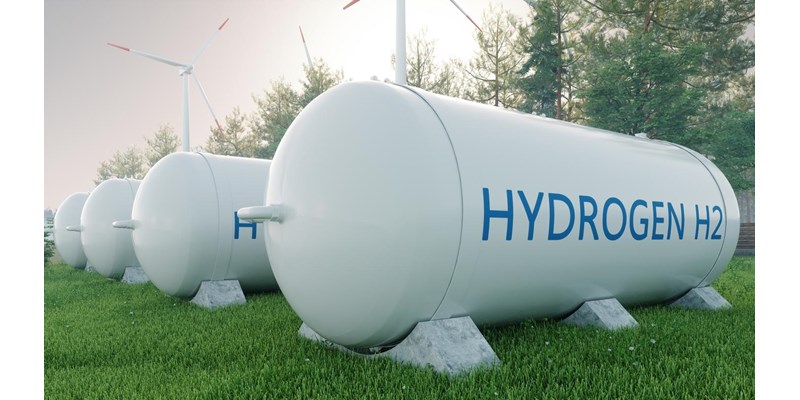
The rise of the hydrogen economy
Green hydrogen could play a critical role in decarbonising the global economy. But there are challenges to overcome before it reaches its full potential. Bookmark this page to get the latest news and views from our global experts.
Sign up for The Inside Track
For details on how your data is used and stored, see our Privacy Notice.
Hydrogen: frequently asked questions
Why is hydrogen so important?
It’s a super-versatile energy carrier with exceptional energy density (MJ/kg). It can be a fuel to supplement or displace others in transportation, heavy industry and many other applications. Around 70 million metric tonnes are produced worldwide, primarily for the chemicals market.
How is hydrogen produced?
The vast majority (99.6%) currently comes from hydrocarbons. Around 71% is grey hydrogen, produced via the reforming of natural gas to produce CO2 and hydrogen. Most of the rest is brown hydrogen, from coal via gasification.
A small portion is blue hydrogen, a lower-carbon alternative that pairs natural gas reforming with carbon capture and storage (CCS). But CCS isn’t yet widely commercial.
What’s green hydrogen?
Green hydrogen is produced from water by renewables-powered electrolysis. Its green credentials will make it critical for difficult-to-decarbonise industries like steel – but in 2020 it only constitutes 0.1% of global hydrogen production. The economics are a challenge. Read Future energy – green hydrogen to find out more.
Will green hydrogen overtake other forms of production?
The pipeline of new projects is growing fast. We're seeing larger integrated energy, industrial and financial players advancing innovative new projects, with the tailwind of net-zero carbon policy at their back.
Got a question about hydrogen and its role in the energy transition?
-
28%
growth in global hydrogen demand over the last decade
-
2450%
growth from the mobility sector – but it's still a tiny portion of demand
-
40%
of demand comes from China and the US
-
99.6%
of 2020 demand is met by hydrocarbons

Explore our hydrogen insight and analysis
Loading...
Hydrogen reports
Hydrogen production costs to 2040: Is a tipping point on the horizon?
Summary
What's included
This report contains:
-
Hydrogen production costs to 2040 - Is a tipping point on the horizon.pdf
PDF 5.64 MB
This report is currently unavailable
Enquire about subscriptionsAlready have a subscription? Sign In
Role of green hydrogen in a post-pandemic world
Summary
What's included
This report contains:
-
WM hydrogen slides_SGX webinar.pdf
PDF 1.19 MB
$1,050
You can pay by card or invoice
View more details Enquire about subscriptionsAlready have a subscription? Sign In
Europe has thrust green hydrogen to centre-stage but is it ready for a star role?
Summary
What's included
This report contains:
-
Europe has thrust green hydrogen to centre-stage but is it ready for a star role?
PDF 759.88 KB
$1,050
You can pay by card or invoice
View more details Enquire about subscriptionsAlready have a subscription? Sign In
Hydrogen mobility market 2020: State of the market
Summary
What's included
This report contains:
-
WM_Hydrogen Mobility Market_ 18 Feb 2020.pdf
PDF 1.31 MB
$1,050
You can pay by card or invoice
View more details Enquire about subscriptionsAlready have a subscription? Sign In
Executive summary: Green hydrogen production - Landscape, projects and costs
Summary
What's included
This report contains:
-
Executive summary - Wood Mackenzie Green Hydrogen.pdf
PDF 910.10 KB
$1,050
You can pay by card or invoice
View more details Enquire about subscriptionsAlready have a subscription? Sign In
Hydrogen as a renewable road freight transport fuel – a UK case study
Summary
What's included
This report contains:
-
Hydrogen as a renewable road freight transport fuel – a UK case study
PDF 762.32 KB
$900
You can pay by card or invoice
View more details Enquire about subscriptionsAlready have a subscription? Sign In
Sorry, you can't view this content if you haven't accepted third party cookies. Please accept cookies or update your cookie preferences.